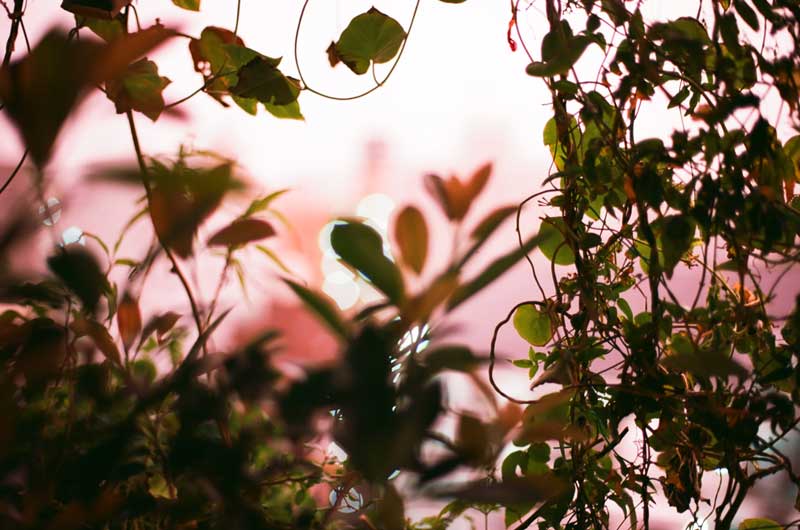
雨に濡れた朝、部屋と都市の間のミニジャングルに、ベランダの木の葉やつるの植物が見えます。
On a wet morning, the balcony foliage forms a mini jungle between apartment and city.

雨に濡れた朝、部屋と都市の間のミニジャングルに、ベランダの木の葉やつるの植物が見えます。
On a wet morning, the balcony foliage forms a mini jungle between apartment and city.
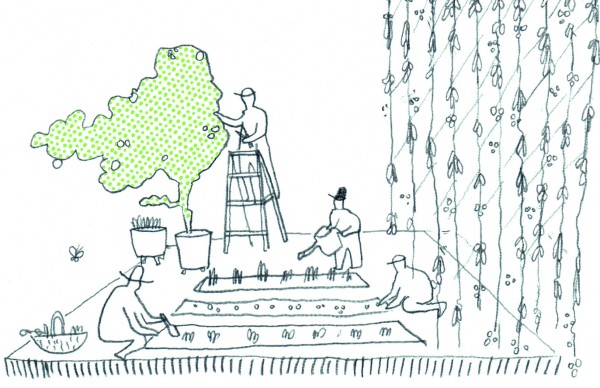
来週の土曜日の5月19日、SHIBAURA HOUSE の「たべるみどり みるみどり」のキックオフイベントに参加します。子供たちのために種爆弾のワークショップ、グリーンカーテンとグリーン階段の作り方のワークショップ、そして片山陽介さんとトークイベントをします。興味があれば、是非来てください。
Next Saturday, May 19, I’ll be participating at the kick-off of Shibaura House’s two month Eat and See Green program. I am leading a workshop for kids to create seed bombs, helping plant a green curtain and staircase at Shibaura House, and talking on stage with Katayama Yousuke (片山陽介). The events are low-cost and open to the public!

スナックエンドウは東京のベランダに育ちやすいです。つるは上に育つので、小さいスペースでも大丈夫ですね。冬に植えて、今食べられます。
I am surprised more people aren’t growing snap peas on Tokyo balconies. Because they’re climbers, they take up very little room. I planted them in winter, and now they are ready to eat!


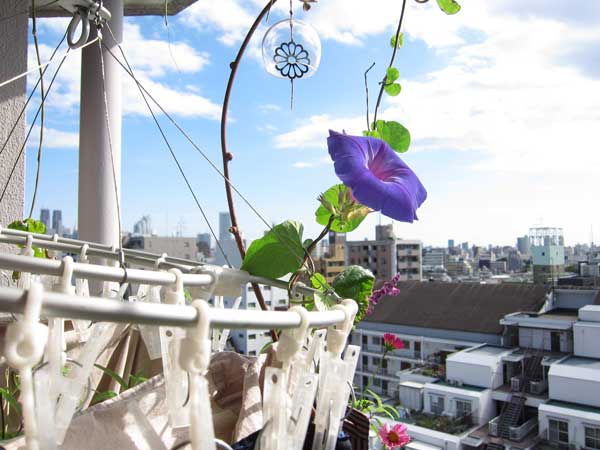


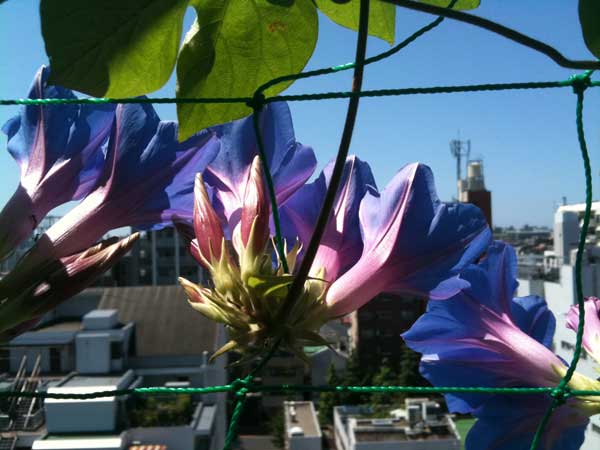
毎朝たくさん沖縄アサガオが咲いていて、グリーン・カーテンはいっぱいになってきました。江戸アサガオとちがって、沖縄アサガオは多年生植物です。この夏は三年目です。正午
までに、花は全部しぼんでいます。
節電のために、今年まだエアコンを使っていません。エアコンを使わないと、楽しめる場所がもっとできます。
Every morning, lots of Okinawa morning glories are blooming on our balcony, and the green curtain is filling out. Unlike Edo morning glory plants, Okinawa morning glories are perennial. This year is the third summer we’ve had this deep blue flower. By noon, the flowers are already wilting.
Because of energy conservation, we haven’t used the air conditioning yet this year. Also, by not using the air conditioning, there’s more space for me to enjoy the balcony garden.
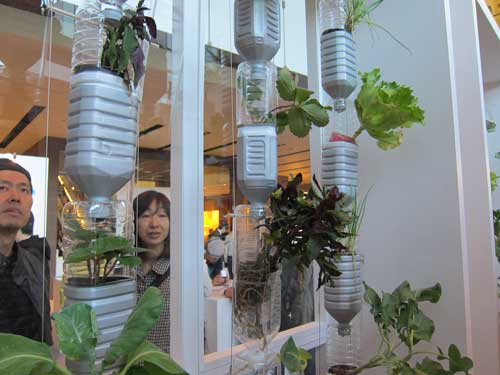
At Tokyo’s Design Touch, I came across Britta Riley’s WindowFarm. It’s a vertical hydroponic system for growing vegetables in apartment windows. I like the idea that city people can grow their own food, that vertical urban space can be better used, and the premise of R&D-I-Y (do it yourself R&D), where customers use web “crowdsourcing” to contribute new ideas about the product.
WindowFarm has appeared at New York’s Museum of Modern Art, the Venice Biennial, and even Martha Stewart’s TV show. The installation I saw really showed off how space-efficient the system is. The parts I am less keen on include the hydroponic system and the pump. The idea of using chemicals and electricity, to me, seems contrary to simplicity and nature. However, I know that many people are strong believers in hydroponic farming.
What do you think? Would you install this system in your home? Could it be done with soil instead of hydroponics? What do you think of creating an online community to support micro-urban farming?
WindowFarm also reminds me of one of the first images from Tokyo Green Space: the “pet bottle” (Japan’s name for disposable beverage containers) supporting a plant in Metro station men’s room. That installation was entirely no-tech, and yet both rely on this ubiquitous and wasteful bottle that we can’t seem to live without.

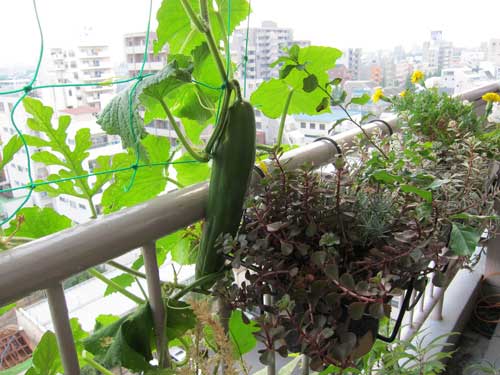
I have experimented with all sorts of summer vegetables and fruit this year. The cucumbers grow incredibly fast (maybe 2 weeks from tiny shape to full size salad material). And like the watermelon, the vines grow easily up the railing and onto the green curtain net, providing a lot of shade. More slow growing, I harvest three eggplants.
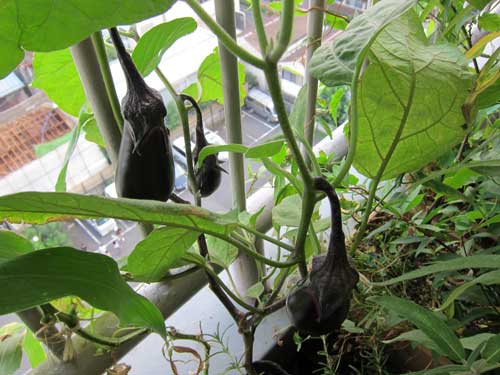
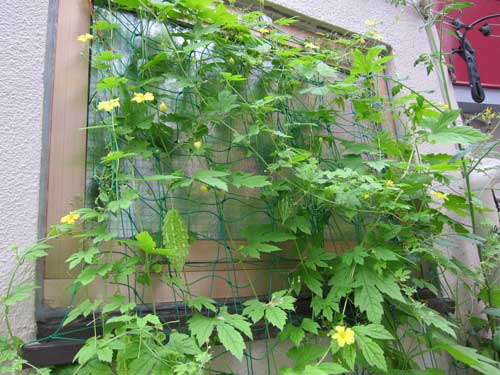
A Sendagaya gardener is growing bitter melon on a mesh net for summer. You can see the prickly green vegetables (tastes great with ground pork). In the context photo, you can see how easy it is to grow in a small size pot on the sidewalk. I like how it covers the window, and dwarfs in size the vending machine.


3331 Arts Chiyoda is a cool art space recently created by the Chiyoda ward government. They converted an old junior high school into exhibition galleries, art studios, and creative industry offices. In addition to a beautiful remodel of the unused school building, the ward also refurbished a small park at the entrance.

Katsuhiko Hibino created this created this beautiful morning glory green curtain rising on the front side of 3331 Arts Chiyoda. Called the Asatte Asago project, the morning glory seeds here had been taken to space by Japanese astronaut Naoko Yamasaki. The project involves community gardening and sharing across different regions of Japan.
Other green projects at 3331 Arts Chiyoda include Chaco Kato’s”Slow Wheat” project at the cafe, with wheat grass plants that will be used as a health drink. The art space is also offering small vegetable plots on the school’s rooftop. If you live nearby, check it out!
On August 21, 2010, Chris Berthelsen of Fixes and I will lead a bilingual interactive workshop on greening the city from 7 to 9 pm. More details will appear soon. The same day, Kato-san will be teaching a beginner’s compost class in the late afternoon.
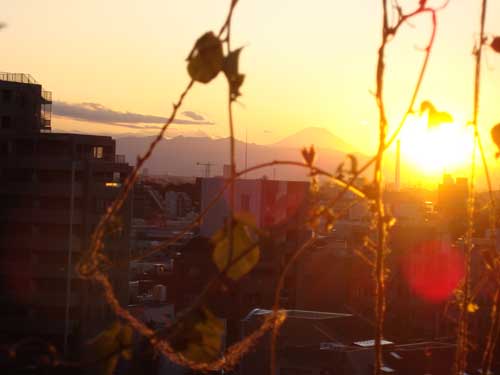
With cooler nights, fall is definitely upon us. I took these photos in the first week of November to document the passing of the seasons on our balcony garden. Above a dramatic sunset over Mt Fuji illuminates the very end of the morning glory green curtain. As you can see in the photo below, there are still many flowers, including cosmos, murasaki shikibu, cyclamen, geranium, fujibakama, a creamy daisy, and a few other annuals.
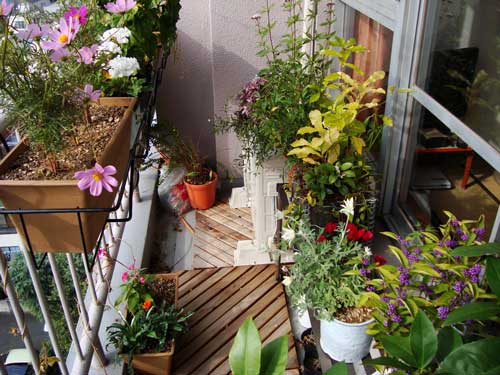
One of the satoyama unit‘s plant is flowering now, while some of the deciduous plants are dropping their leaves.
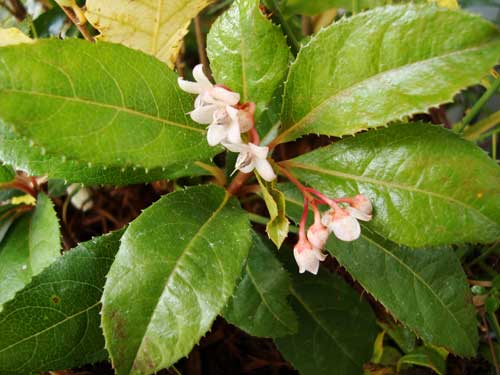
The black pine bonsai I assembled at Kobayashi Kenji Sensei’s class at Sinajina is doing well.
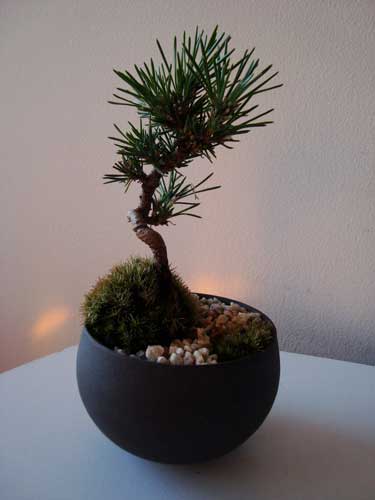
And we put the ojizō-sama made at the ceramic studio into one of the satoyama units.
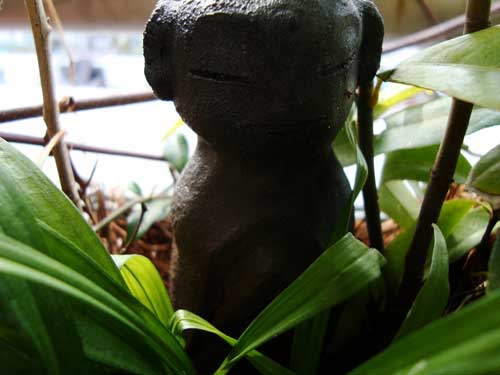
More photos of fall plants, including lemon tree, ceramics, and more images of the satoyama units after the jump.